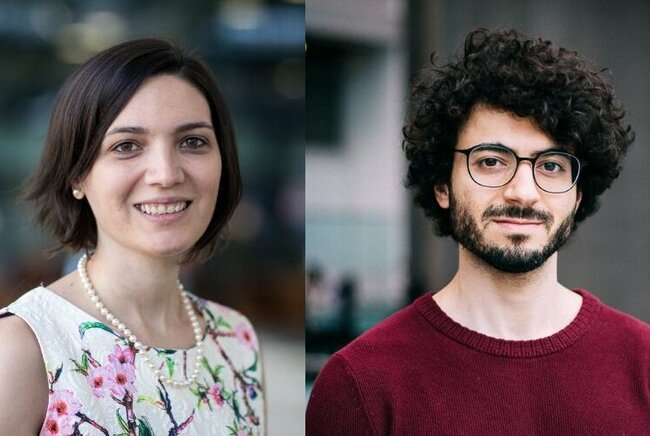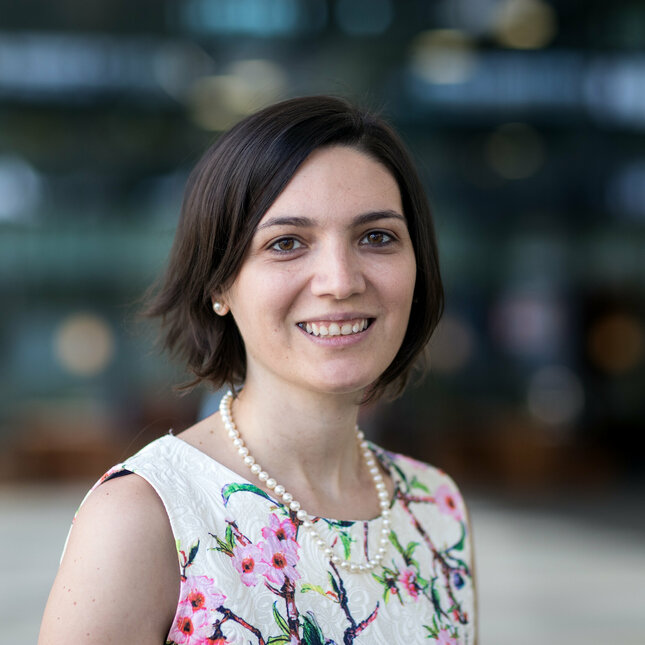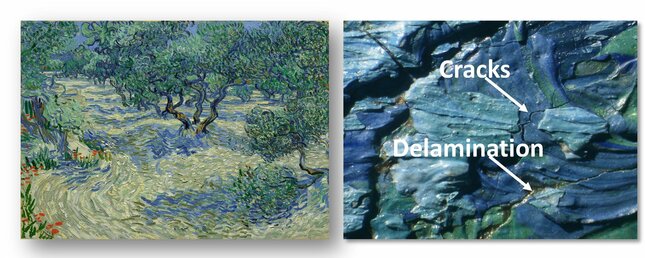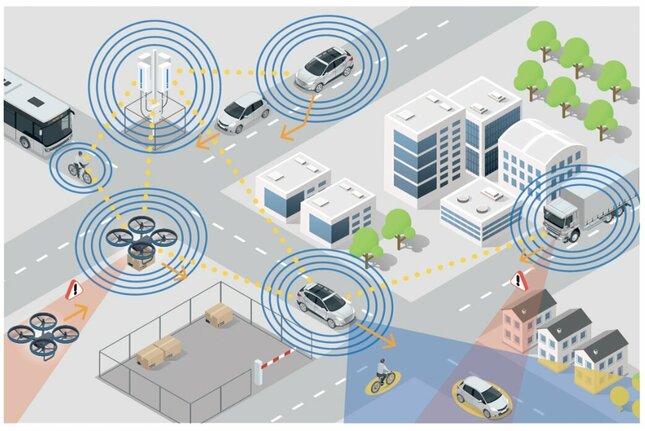Research on decay of paintings and new environment-scanning mobile networks rewarded with huge European grants
ERC Starting Grants of over 1.5 million euros for Emanuela Bosco and Hamdi Joudeh.

TU/e researchers Emanuela Bosco and Hamdi Joudeh have each been awarded a grant from the European Research Council (ERC) worth 1.5 million euros. Bosco will use this Starting Grant to study the physical degradation of historic paintings. Joudeh is laying the theoretical foundation for future wireless networks that will allow us not only to communicate but also to map the environment. The researchers can use the funding for their research over the next five years.
Emanuela Bosco (Built Environment)
In some classic paintings such as Leonardo da Vinci’s Mona Lisa, cracks have become part of the identity of the work. But in general, cracks are undesirable and can even cause irreparable damage in important ancient works.

Associate Professor Emanuela Bosco (department of Built Environment) investigates the complex physics behind damage, cracks and distortions in historical paintings. She aims to use microscopic samples to predict how a painting behaves as a whole.
It may seem simple, but in terms of materials, a painting is complex, Bosco says. For example, there are often multiple layers of oil paint made up of different pigments. These are painted on yet another material, the canvas. Chemical and physical interactions between these layers cause complex degradation mechanisms, something conservators are trying to prevent.
Bosco is developing a method to make predictions about the damage a painting may suffer in the future, departing from the behavior of canvas and paint at the microscale. To do this, she takes barely visible samples (micrometers in size) from original artworks and subjects them to mechanical tests.
“This gives you a lot of information about how the paint behaves and how cracks start in it,” she says. She also looks at how moisture and temperature affect a painting. The data on the behaviour of the samples go into a computer model that predicts the behaviour on a larger scale.

Focus on material
The results are then compared with real paintings. “With well-known works like the Night Watch, there has been a lot of research on degradation and deformation. We use that to support predictions,” Bosco said. She says the model can ultimately help determine the best conservation strategy.
Bosco investigates different types of canvas and pigments, such as the so-called lead white, which was used as a substrate in almost all classical paintings, and various organic dyes derived from soil. Previous research focused mainly on the chemistry of substances, for example, how pigments can change colour. This happened, for example, in works by Vincent van Gogh. Much less is known about the mechanical behaviour and physical degradation of paintings. Moreover, there is a general lack of information, because directly testing historical works is not possible.
The techniques Bosco uses are now being applied to paintings for the first time. She is pleased with the new direction she has taken. “Previous research I did was about the chemical and physical degradation of completely different materials, for instance, concrete, but the fact that I can now apply this to cultural heritage is fantastic.”
Bosco will use the ERC Starting Grant to hire two doctoral students and a postdoc.

Hamdi Joudeh (Electrical Engineering)
Watching a movie or making a video call on the go doesn’t feel that special. We owe these possibilities to fast mobile networks such as today's 5G. Assistant professor Hamdi Joudeh of the department of Electrical Engineering wants to lay the foundation for a completely new feature of our future mobile networks such as 6G. With these techniques we can not only communicate, but we can also map the world around us.
'Scanning' the environment with radio signals from cell phones, transmission towers or Wi-Fi points, for example, is possible because buildings, people and other objects reflect them. With the echo returned at the point of the transmitter, you can form an image of the environment. Joudeh compares it to what bats do with (ultra)sound. They use sound waves inaudible to us to communicate, and at the same time map their surroundings.
Joudeh's research focuses on the so-called information theory that, among other things, describes how much data you can reliably send. It forms the basis for protocols for all our connections – agreements that ensure that information arrives despite disruptions along the way – whether it is a classic radio connection, Wi-Fi or the mobile network.
For our current 5G and Wi-Fi protocols, that theory is watertight, but for signals that contain information and also serve to scan the world, it does not exist at all. “For example, we are trying to determine how much information you can put in a signal that is also used to reliably map the environment,” he says.
A new theory for 6G networks
Joudeh hopes his theory will eventually be used as the basis for future mobile networks such as 6G. Joudeh mentions an application in cars. Sensors in self-driving cars could communicate with other road users and could instantly use the same signals to determine their positions and speeds. “That's more efficient in several ways,” Joudeh says. “You don't need a separate device like a radar, and you make better use of the radio spectrum that is already crowded.”

It could also be useful for environmental monitoring and crowd control at large events, or in health care. “It has been proven that you can use Wi-Fi signals to detect that someone has fallen in a nursing home, for example. And even measuring heart rate is possible,” he says. “We are trying to combine all those functions with the fastest possible connection.”
Hamdi Joudeh will use this ERC Starting Grant to hire two PhD students and two postdocs.
Latest news


![[Translate to English:] [Translate to English:]](https://assets.w3.tue.nl/w/fileadmin/_processed_/e/0/csm_BvOF%202019_1031_BHF%20license%20TUe%20ILI%20copy_8a50884392.jpg)